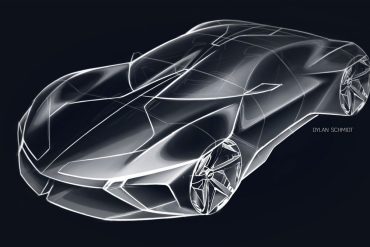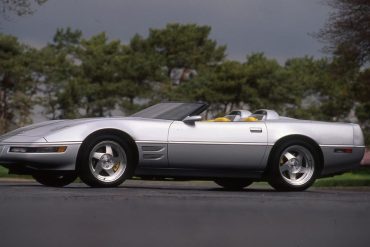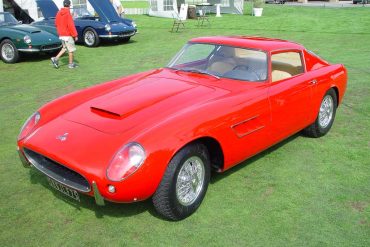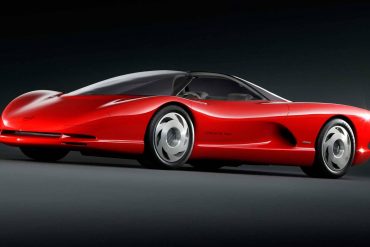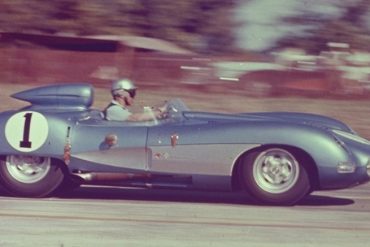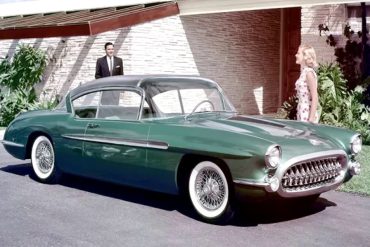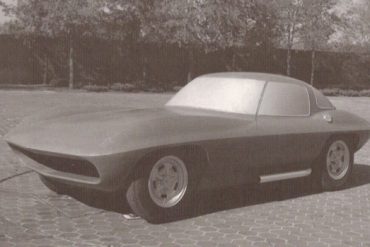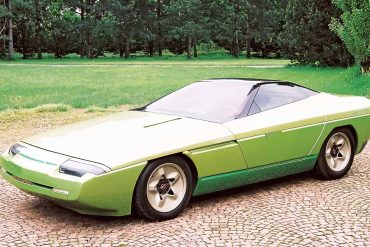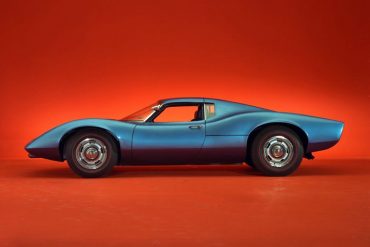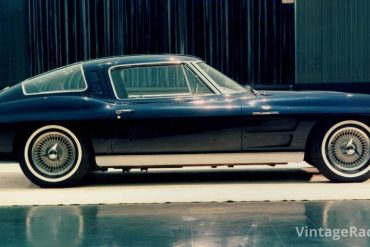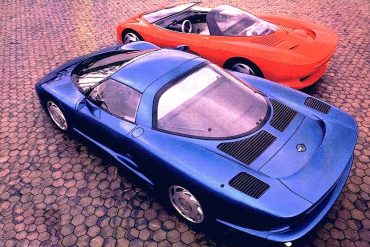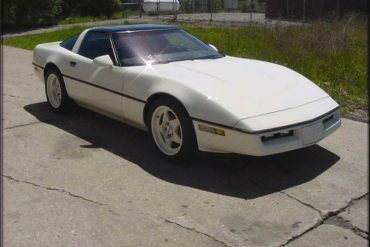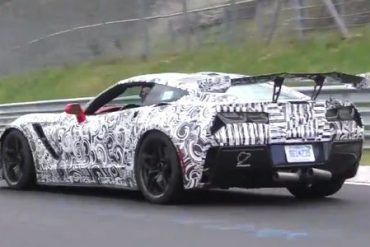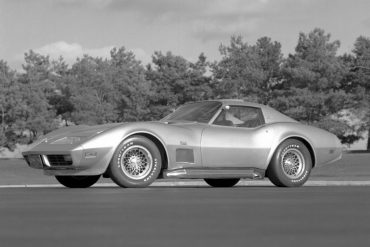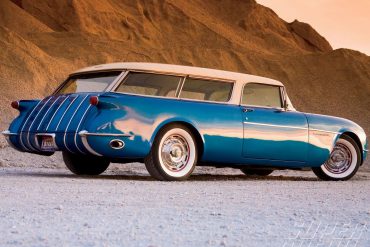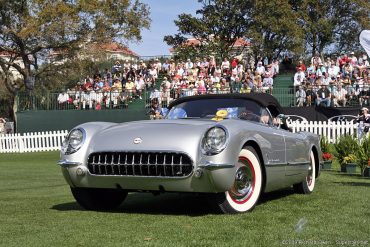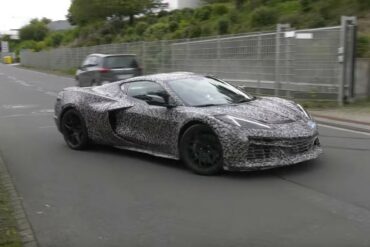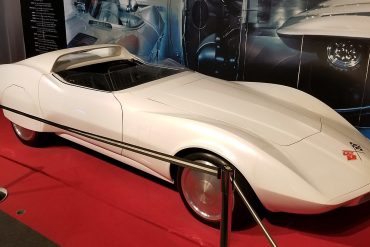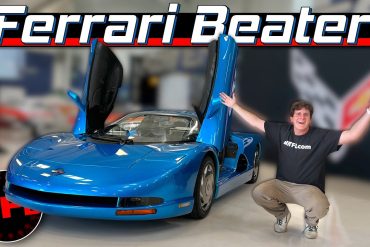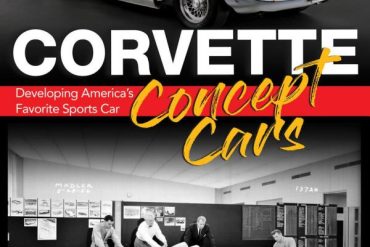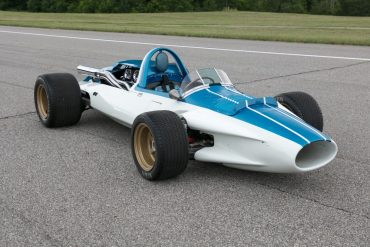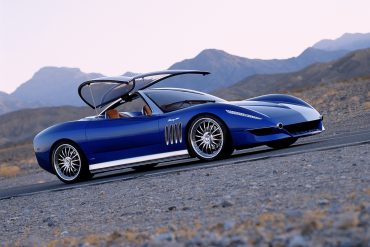Nothing seems to generate more buzz (and angst) among Corvette enthusiasts than speculation about what the next generation will look...
Chevrolet Corvette ZR-1 Spyder prototype, 1991, by ASC. An experimental styling prototype ordered by Don Runkle, Chevrolet’s chief engineer, to see how far the ZR-1 might be pushed in convertible form. The windshield was chopped in half and the seats were mounted directly to the floorpan. The black example in the National Corvette Museum was originally painted Sebring Silver with a Neutrino Yellow interior.
When the crankshaft broke on Gary Laughlin’s Ferrari Monza he had had enough. Being the owner of several Chevrolet dealers, he turned to Peter Coltrin to have a few rebodied. Fortunately, they pursued Sergio Scaglietti who made three fastback coupes on the Corvette chassis.
Mid-Engine Prototypes: The 1985 Corvette Indy Concept, The 1986 Corvette Indy and the 1990 CERV III Since the introduction of...
The Corvette SS began life as an experimental race car, and was unveiled to the public at the 12 Hours of Sebring endurance race on March 23, 1957. The SS was in training for Chevrolet's debut at LeMans that year. The Sebring race was, in many ways, Chevrolet's inauguration into modern racing. But the SS never finished the race, much to the dismay of the racing community.
On July of 1955, the Chevrolet design studio staff created a dream car for the 1956 GM Motorama shows, called Corvette Impala. The Corvette grille and grille surround are incorporated, as well as other Corvette components. This hardtop five-passenger sports sedan shows the name "Corvette Impala" on the front emblem and rear license plate.
Somewhere in the second part of 1959, project XP-720 begins at GM Styling, to design a production Corvette based on Bill Mitchell's Sting Ray racer. It would become known as the C2 or second generation Corvette. In October of that same year, a clay mock-up of project XP-720 is completed and put on display for General Motors' management viewing.
In 1983, Bertone began to explore the possibility of approaching the US market with the Ramarro, an exercise in applied technology around mass-produced mechanics. The Ramarro, which means "green lizard" in Italian, was created on the chassis of the well-known Chevrolet Corvette, and the underlying concept aimed to modify the layout of the mechanical components.
Those who are familiar with the history of the Corvette, and Chevrolet in general, know that it is filled with...
The Stingray that never was. The stretched version of this new Corvette model for 1963 has rear seating and was built as ordered by Chevrolet chief Ed Cole. Larry Shinoda designed this coupe, that never went into production because the demand for the two seated Stingray already was overwelming. A running prototype of a 2+2-seat C2 Corvette intended to compete with the Ford Thunderbird was built, but the project was canceled.
While it was understood that the Corvette Indy Concept would never be fully realized as a production vehicle, it paved the way for the creation of the twin-turbo CERV III. The CERV III (Chevrolet Engineering Research Vehicle No. 3) was introduced in January, 1990 at the International Auto Show in Detroit, Michigan. Like the latter iteration of the Corvette Indy Concept car, the CERV III was fitted with a 5.7 Liter, 32-valve, dual-overhead cam LT5 engine that featured twin turbochargers. It had 650 hp and 655 lb/ft of torque and top speed of 225 mph.
In the late 80s, Chevy was developing what some dubbed a ‘Super Vette.’ But the 1989 debut of the Dodge Viper sent GM engineers on a new path to develop a ‘Viper-Killer.’ It started with a factory test mule and the experiment was to see how a ZR-1 would perform if given more power and less weight. It was so fast it was called "Snake Skinnner", for it's ability to beat the Viper and Cobra.
Spy Photos Reveal Clues About the Next ZR1 Corvette Since the introduction of the C7 Stingray in 2014, Corvette enthusiasts...
Chevrolet Corvette Mulsanne Showcar, 1974. Created by Bill Mitchell, the Mulsanne was a development of several previous Corvette “specials”, the 1969 Aero and the 1970 Scirocco. By 1974 it had been bored out to 454 ci and fitted with an experimental Rochester fuel injection system, it also had a periscope rearview mirror system.
Carl Renner was responsible for the Nomad which was essentially a Corvette built with an extended station wagon roof. This meant the Corvette shared its lightweight fiberglass body, ‘Blue Flame’ inline-6 engine and curvaceous styling with the Nomad.
The 1954 Corvette was outfitted with several unique design features. These were the results of two design exercises that included both interior and exterior upgrades. Outwardly, this styling concept is distinguished by its sharkfin headlights which effectively split each headlight down the center.
Rumors regarding the Corvette E-Ray has been around for a very long time. As early as 2015, it has been...
The Astro II was one of the most significant case studies of Duntov’s outright refusal to let his mid-engine dreams die, and as such, ultimately entered the history books as a precursor to the eventual mid-engine, C8 Corvettes of today. The Astro II was designed in a way that was more representative of the Corvette’s typical styling cues, than that of The Astro I.
In January 1990, Chevrolet unveiled the CERV III (Chevrolet Engineering Research Vehicle No. 3) at the Detroit International Auto Show....
In 2020, I was approached by CarTech Books to write a book on the history of the Corvette thru the...
The “CERV-1” (Chevrolet Engineering Research Vehicle) was developed as a research tool for that company’s continuous investigations into automotive ride and handling phenomena under the most realistic conditions. The car was built at the Chevrolet Engineering Center at Warren, Michigan in a special project headed by Mr. Zora Arkus-Duntov, Chevrolet Staff Engineer.
The Moray project, presented for the first time at the Geneva Motor Show on March 4, 2003, embodies the homage that Giorgetto and Fabrizio Giugiaro wish to pay to the fifty-year era of the Chevrolet Corvette, the supreme symbol of the American sports car. Touched by drifting tides with long and slender front lights, bringing immediately to mind the Moray, the English term for the eel-type fish, muraena helena, found in Mediterranean waters.
No More Content


